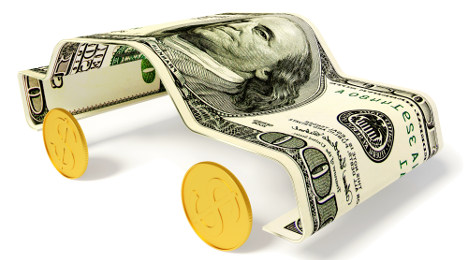Based on a view the competitive pressure in the subprime finance space isn’t quite as intense, Consumer Portfolio Services watched its second-quarter earnings per diluted share spike by 47 percent year-over-year.
CPS reported that its Q2 earnings rose to $7.0 million, or $0.22 per diluted share, for the quarter that ended June 30. During the same span a year earlier, the company’s net income was $4.8 million, or $0.15 per diluted share.
Through the first half of the year, CPS also is posting a 47-percent jump in earnings. Through the six months of 2014, CPS generated $13.7 million, or $0.43 per diluted share, compared to earnings of $8.6 million, or $0.27 per diluted share at the halfway mark of 2013.
“We are pleased with our operating results for the second quarter of 2014,” CPS chairman and chief executive officer Brad Bradley said. “We increased our new contract purchases and managed portfolio, and achieved continued earnings growth.
“In addition, we hit a milestone in one of our corporate objectives by earning a triple-A rating on the senior class of notes in our 2014-B securitization, which contributed to an extremely low cost of funds on that transaction,” Bradley continued.
During a conference call with investment analysts, Bradley gave his usual candid assessment of how the subprime finance market is behaving and how CPS is navigating current conditions.
“We certainly are very happy where we sit within the industry,” Bradley said. “A lot of folks say how competitive it is. From our opinion, it would appear that a lot of the sort of the competition has eased a bit.
“Whether everybody’s just taking a step back for a variety of reasons, it's a little hard to tell. We think that the competitive environment eased some. We have a few ideas on why, but we’re don’t have anything definitive to point out,” he continued.
Without naming any specific institutions, Bradley speculated on what other finance company strategy might have been in recent quarters.
“We think there was a few companies out there, particularly large ones, maybe growing on purpose, maybe before an IPO or something, and so maybe they’ve slowed down,” he said. “Some of the larger guys probably have slowed down. The really big players, no one appears to be being overly aggressive in trying to seize market share.
“And the medium segment of players, there’s probably a few guys that might have gotten a little ahead of themselves, and so we see some sort of true backing off in sort of the mid-level,” Bradley continued. “And then at the lower level, you have a bunch of small companies who are trying to go in and grab market share. Maybe they finally have been getting a little bit burned and backed off some.”
So is the subprime surge over, contrary to what some analysts said in this report posted by SubPrime Auto Finance News last week?
“If you look at it on the whole, what you really have is it’s not like everybody's backing up like crazy, but it’s really nobody’s particularly pushing forward,” Bradley said. “And that has given us a little bit of a growth spurt in the middle of summer when we would never really have one at all.
“We’re not making huge predictions. But it is interesting that people overall have appeared to at least slowed down or aren’t pushing aggressively forward,” he went on to say.
More Details of Q2 Performance
As Bradley reference, CPS purchased $211.4 million of new contracts compared to $189.9 million during the first quarter of 2014 and $203.8 million during the second quarter of 2013.
The company’s managed receivables totaled $1.374 billion as of June 30, an increase from $1.295 billion as of March 31 and $1.067 billion as of June 30 of last year.
Looking at second-quarter revenue, CPS generated $71.6 million for an increase of $1.1 million, or 1.6 percent. Officials pointed out that revenues in Q2 of last year included $10.9 million from a gain on cancellation of debt.
Excluding that gain, the company calculated that revenues for the second quarter increased by $12.1 million, or 20.3 percent, year-over-year.
CPS’ total operating expenses for the second quarter settled at $59.3 million, a decrease of $2.7 million, or 4.3 percent compared to $61.9 million a year earlier.
However, in the second quarter of 2013, the company pointed out operating expenses included a provision for contingent liabilities of $9.7 million. Excluding the provision for contingent liabilities, operating expenses increased $7.0 million, or 13.3 percent.
Pretax income for the second quarter came in at $12.3 million compared to pretax income of $8.5 million in the second quarter of last year, an increase of 44.3 percent.
And finally in terms of the health of its portfolio, CPS indicated its annualized net charge-offs for the second quarter were 4.98 percent of the average owned portfolio as compared to 4.03 percent for the second quarter of 2013.
The company’s delinquencies greater than 30 days (including repossession inventory) stood at 6.21 percent of the total owned portfolio as of June 30, as compared to 5.16 percent as of the same date last year.
With the subprime slice at levels “essential for a healthy economy,” the latest Equifax National Consumer Credit Trends Report indicated the total balance of auto loans midway through 2014 soared to a record high.
Sparked by a growth rate of more than 10 percent, Equifax said on Thursday the total balance of auto loans in finance company portfolios now stands at $902.2 billion.
Furthermore, credit bureau analysts determined the total number of auto loans outstanding now sits at more than 64 million.
Despite record high balances, Equifax pointed out serious delinquencies on vehicles loans remain near all-time lows, representing less than 1 percent of total outstanding balances for the third consecutive month.
In addition, the total balance of new credit originated for auto loans year-to-date in April is $163.5 billion, the highest since at least 2005.
“Auto lending continues to thrive, accounting for more than fifty percent of all new non-mortgage lending through April of 2014,” Equifax deputy chief economist Dennis Carlson said.
“Lenders are responding to record low delinquencies by offering great rates and terms, while consumers are responding to the improving economic conditions by making the decision to purchase newer vehicles,” Carlson continued.
“Additionally, subprime lending has grown across all sectors in 2014. This is good news as a fully functioning second-chance market is essential for a healthy economy,” he went on to say.
Equifax noted that the total number of new loans originated through April for subprime borrowers — consumers with risk scores of 640 or lower — came in at 2.6 million, representing 32 percent of all vehicle installment contracts originated during the first four months of 2014.
The total balance of subprime auto loans now stands at $46.2 billion, an eight-year high and representing 28.2 percent of the total balance of new auto loans, according to Equifax.
The lengthening of vehicle financing contracts as well as the loan amount attached to those deals has the attention of another federal regulator — the Office of the Comptroller of the Currency.
The auto finance market appeared several times in the OCC’s Semiannual Risk Perspective from its national risk committee, which monitors the condition of the federal banking system and emerging threats to the system’s safety and soundness. NRC members include senior agency officials who supervise banks of all sizes, as well as officials from the law, policy, accounting, and economics departments. The committee meets quarterly and issues guidance to examiners that provides perspective on industry trends and highlights issues requiring attention.
“The OCC sees signs that credit risk is now building after a period of improving credit quality and problem loan clean-up,” the agency said in the report. “Examiners have observed erosion in the underwriting standards for syndicated leveraged loans, as well as loosening of standards and increased layering of risk in the indirect auto market.
“Further, bankers are speaking out increasingly regarding their concern with competitive pressures. Given these trends, the OCC will increase its attention on underwriting standards and encourage banks to diligently assess their credit risk appetite in this stage of the credit cycle,” officials said.
To reinforce its assessment, OCC officials cited several metrics previously reported by SubPrime Auto Finance News, including Experian Automotive’s quarterly analysis of term length and loan-to-value ratios.
According to Experian’s latest State of the Automotive Finance Market report, loan terms in the first quarter of this year reached the highest level since the company began publicly reporting the data in 2006.
The analysis also showed that loans with terms extending out 73 to 84 months made up 24.9 percent of all new-vehicle loans originated during the quarter, growing 27.6 percent since the first quarter of last year.
The average amount financed for a new vehicle loan also reached an all-time high of $27,612 in Q1 2014, up $964 from the previous year. In addition, the average monthly payment for a new-vehicle loan reached its highest point on record at $474 in Q1 2014, up from $459 in Q1 2013.
“Across the industry, auto lenders are pursuing growth by lengthening terms, increasing advance rates, and originating loans to borrowers with lower credit scores. Loan marketing has become increasingly monthly-payment driven, with loan terms and LTV advance rates easing to make financing more broadly available,” the OCC said in its report.
“The results have yet to show large-scale deterioration at the portfolio level, but signs of increasing risk are evident,” officials continued. “Average LTV rates for both new and used vehicles are above 100 percent for all major lender categories, reflecting rising car prices and a greater bundling of add-on products such as extended warranties, credit life insurance and aftermarket accessories into the financing
“The average loss per vehicle has risen substantially in the past two years, an indication of how longer terms and higher LTVs can increase exposure,” the agency went on to say. “Average charge-off amounts are higher across all lender types over the last year.
“These early signs of easing terms and increasing risk are noteworthy, and the OCC will continue to monitor product terms and risk layering practices to ensure that banks manage growth and exposure prudently,” the OCC concluded.
Steve Klees sees motorcycles and other powersports equipment sitting at dealerships and can’t help but think there are possibly scores of potential subprime buyers for those items if more finance companies chose to delve into that market.
Klees, who is the senior vice president of specialty channels with EFG Companies, explained his thinking to SubPrime Auto Finance News earlier this summer.
“Think about one out of every seven or eight customers the dealers pays from leads to come on the lot and they can’t take delivery because they can’t obtain credit through the dealership,” Klees said.
“That’s a big market opportunity that’s out there for those companies that are aggressive and understand where the opportunity is,” he continued.
With that situation in mind, EFG Companies announced it has been selected as the premier product provider by MotoLease, a financial services company that offers unique consumer leasing programs through MotoLease authorized dealers. The company designs solutions exclusively for the motorcycle and powersports markets to help even the most credit-challenged riders.
MotoLease has partnered with EFG Companies’ Motorsports Division to enhance its lease offering with a goal of aggressively increasing market share. EFG private labeled its vehicle return program, the award-winning program behind Hyundai Assurance, along with its vehicle service contract and roadside assistance.
Starting in June under the SelectGuard brand, all MotoLease leases will include complimentary limited coverage, including six months vehicle return and 12 months roadside assistance, with the option to upgrade.
“Going into 2014, we knew we had to get ahead of industry trends, and leasing gives customers the ability to get into a bike without having the extra financial burden of an outright purchase,” MotoLease managing partner Emre Ucer said.
“EFG demonstrated agility and innovation within their product development and administration that we felt would greatly enhance our ability to achieve our goals,” Ucer continued.
According to the latest report from the Motorcycle Industry Council, first-quarter sales were down 0.2 percent (or 118 units) from Q1 2013, and the motorcycle market dropped 14.7 percent in Q1 2013 from the year before.
While yearly sales have stabilized since the Great Recession, EFG Companies believes they have not bounced back yet.
“MotoLease had significant opportunity to adapt their lease product to both dealership needs and customer concerns,” said Glenice Wilder, vice president of EFG Motorsports. “Our private-labeled product offering takes on that opportunity by providing consumers critical protection against unforeseen circumstances and setting the stage for dealers to increase their profitability with upgrades.”
With the combined effect of American consumers still being wary of the economy and motorcycle sales dependency on discretionary income, dealerships need a significant value-add to incentivize consumers to make a motorcycle purchase. MotoLease recognized this need and understood that providing limited complimentary consumer protection products would significantly enhance the value of their leases.
This new offering from MotoLease and EFG is designed to enable dealerships to better provide customers options when making a purchasing decision, while at the same time increasing profit per lease sold and customer loyalty.
“If you take higher end bikes with an average unpaid balance of somewhere between $14,000 and $15,000, the margin opportunity for lenders — which I think is really interesting in the motorsports space — is significantly higher maybe even two to three times than it is on the auto side that’s so highly competitive,” Klees said.
“I don’t think you’re going to see losses that are any different. I don’t think you’re going to see delinquency rates get higher. I think there might be worrying on how to collect those properly and getting back collateral. But it’s a highly profitable, high margin opportunity that I believe is being missed,” he continued.
Klees recalled that Harley-Davidson Financial Services, the captive he called the “bellwether” of the motorcycle space, held about 28 percent of its overall portfolio in subprime in 2006. Klees noted that penetration softened dramatically during recession and recovered to only about 7.5 percent last year.
“While it’s come back really strong for retail automotive, there is still a gigantic gap in the subprime motorsports financing business that just aren’t back to what the current needs are,” Klees said.
“I think a lot of lenders withdrew from it,” he continued. “The major attraction for subprime lenders was to get back into auto because it’s a business that they knew very well prior to the recession. There are also higher balances. Motorsports have really been ignored.
“In that five year, six year span, Harley stayed around for their dealers as the captive, but we have a whole generation of finance managers now that have become used to using only the captive as an example,” Klees went on to say.
“They haven’t really expanded out to see who is in the market and who is ready to play. It just hasn’t bounced back due to the lack of search on the part of dealers and the lack of interest on the part of lenders. But there is tremendous opportunity,” he added.
Klees also touched who these potential subprime buyers might be. He mentioned a large amount of possible buyers who didn’t even have a credit history before the recession or individuals who saved as much of their money as possible during the economic downturn.
“Those are your target demographics,” he said.
And potential buyers who took various kinds of hits to their credit during the recession?
“Those that were bruised have recovered and they understand that the value that they get with a purchase is critical,” Klees said.
“I think there is better opportunity now than there was six years ago when everyone departed,” he added, noting the Motorcycle Industry Council projected retail sales of 385,000 units this year, possibly rising to about 410,000 units in 2015.
Beyond the metrics about originations, collections and other figures associated with vehicle financing, the 2014 member survey orchestrated by the National Automotive Finance Association highlighted just how important Millennials are to the present and future of the industry.
During his presentation at the 18th annual Non-Prime Auto Financing Conference, George Halloran discussed at length this new crop of consumers, individuals who are comfortable handling just about any part of their financial lives through the Internet at just about any time of the day. Halloran is the auto finance program director at Benchmark Consulting International, which assembled the survey for the NAF Association again this year.
“I think it’s very much on the minds of all finance sources because what we see is the younger generation, if they’re not shopping, they show up with mom or dad or grandma and grandpa,” Halloran said. “The dealerships are becoming much more connected to this kind of shopping. And the finance source similarly is becoming much more connected because these people want to shop when they want to shop. They want products and services available on their schedule with complete information and transparency.
“It’s kind of like if they wake up at 2 in the morning, eat a Snickers, drink a Red Bull and decide they want to buy a car, they want to do it right then,” he continued. “They want to find their financing then so you have to be online with your offers and processes so they can go to them and almost get to the point of pre-approval.
“In the non-prime market, it’s a little tougher, but that’s what they’re looking for. And the younger shoppers are shopping sometimes not for themselves,” Halloran went on to say.
The dialogue about Millennials that started again at the conference and now continues isn’t something new per se, according to Halloran. During other presentations at NAF Association events, he said the topic of Millennials came up, but now it’s even more pressing since this demographic appears to represent a much larger piece of the potential buying pool.
“I don’t think it’s too much of a culture shock, but it has been something they’ve been monitoring for years,” Halloran said. “It’s an evolution. Right now finance companies are serving two types of marketplaces. Those who are not Millennials, and those who are.
“They might not be actual customers yet, but they have a huge impact on the actual customer in terms of how they operate and the tools they use and information channels they use,” he continued.
Halloran made two other points about how finance companies must approach Millennials.
“These people are very social in the way they define social, which means they want what they want when they want it, and it has to be available in a fully transparent way,” he said.
“They’re not particularly price sensitive. They’re not necessarily shopping for the best price,” Halloran continued. “Their shopping revolves around more of what they want and what they can afford. If they think they can afford something, they’re not just going to look for the lowest price around. If they find something that’s acceptable — that’s what it means to be social to them — that’s the implication in terms of pricing and availability.”
Revamped Study Produces Enhanced Results
The NAF Association included metrics from the past two years in its latest study because officials took a one-year hiatus to revamp the survey process with their partner, BenchMark Consulting International. The association meshed together some of its long-standing analysis with new material provided by Experian Automotive and FactorTrust.
The new product resulted in the NAF Association and its members being able to identify nearly a half dozen challenges that are either new or have been presented but intensified in the past couple of years.
To reinforce the validity of its process, orchestrators pointed out that 77 percent of companies that participated are repeat contributors. The total accounts for the 22 finance companies that completed the survey surpassed 1.2 million, up 5 percent from two years ago when the last survey was compiled. The outstanding balances within the portfolios of the participants exceeded $10 billion, up 10 percent from the previous installment.
The 22 finance companies that participated included:
— AFS Acceptance
— Anderson Brothers Bank
— Automobile Acceptance Corp.
— Chase Auto Finance
— Crescent Bank & Trust
— FIFSG/First Investors Financial Services
— Foursight
— Gateway Financial Solutions
— MarkOne Holdings
— MPH2 Funding
— Nationwide Acceptance Corp.
— PFS Corp.
— Prestige Financial Services
— Regional Acceptance Corp.
— Security National Automotive Acceptance
— Southern Auto Finance
— Summit Financial Corp.
— Tidewater Finance Co.
— Top Finance Co.
— Turner Acceptance
— United Finance
— Westlake Financial Services
“A year and half ago, we decided that the survey questions that were being asked and the report we produced, the information was available from other sources,” NAF Association executive director Jack Tracey said. “We made a conscientious effort to try to find out what the marketplace wanted to know. We then built the survey form we’re using today to gather information so we could produce more relevant information that would be useful and not necessarily available anywhere else.
On top of that we brought in Experian and FactorTrust with their information stratified into just the non-prime markets. We feel now that we’re getting a broader overview of the industry, and the details we are providing hopefully will be some metrics to help manage their organizations,” he continued.
Highlights of Conference
One of the largest crowds ever attended this year’s NAF Association Non-Prime Auto Financing Conference, pushed in part by the presence of the Consumer Financial Protection Bureau.
“I think it went very well. The feedback has been almost universally favorable,” Tracey said. “People think we really raised the bar this year on what we provided to the people in attendance.
“It was just a good event. It challenges me to keep the conference as interesting as we need it to be,” he continued. “With the CFPB out there doing things, it’s not hard to come up with items that people are concerned about.”
The event started with a Q-and-A session only for NAF Association members with Jeffrey Langer and Eric Reusch, who both are in the Office of Installment and Liquidity Credit Markets with the CFPB. Later a select group had the opportunity to have a lunchtime discussion with both of the CFPB officials who shared their perspective on the regulatory requirements the bureau is asking of finance companies.
“The CPFB people were very pleased with the opportunity to answer the questions the NAF members asked,” Tracey said. “Our people were extremely pleased with the exchange of information, getting a real appreciation for what the CFPB is trying to do.”
The conference included presentations from Sandy Schwartz and Tom Webb from Manheim, Amy Martin from Standard & Poor’s and Steve Chaouki from TransUnion.
Tracey shared one other element he noticed that made this year’s conference unique.
“We had a lot more funders than we’ve had in the past, which is an indication that the market is hot. There’s a lot of money out there,” Tracey said. “You could conclude that there is a lot of money in the marketplace chasing deals so there is a lot of pressure on the finance companies to lower rates or take riskier transactions in order to get the money on the street.
“Generally, those dynamics when there is a lot of money flowing into the market and the competition increases and there is a need for volume, we’ve reached the peak of the cycle and some of the negatives in the marketplace — delinquencies, losses, repos — those trends start to take over,” he continued. “Then, the market slows down a bit because people become spooked.
“The funders are there, and that’s good. But it also creates an environment that people need to be cautious of,” Tracey added.
Equifax determined the total dollar amount for subprime vehicle financing originated in March surged higher than any single month going back seven years.
Credit bureau analysts found that subprime auto loans in March came in at $13.1 billion, marking an 8.8-percent increase year-over-year. Equifax had to go back to March 2007 to find a figure that high. That’s when the market generated $12.5 billion in subprime paper in a single month.
SubPrime Auto Finance News caught up with Lou Loquasto, Equifax’s auto finance vertical leader, on Tuesday to get more information about why the subprime figure climbed so high.
“It’s a continuation of portfolios doing really well both from a frequency of default standpoint and also when there are repossessions. Loss severity has been low because the used-car market has been so strong. That’s the two best scenarios — fewer defaults, and when there are defaults, you get more money back for the car,” Loquasto said.
“You’ve also got this hyper-competitive environment out there,” he continued. “A lot of banks that we talk to, a lot of traditionally prime lenders, they notice low delinquencies, and they notice shrinking yields in prime and superprime so it’s natural for them to migrate downward, especially now as lenders are getting more sophisticated. When they do migrate downward a little bit, they’re doing it with their current customers. If you’re a bank or credit union, they’re actually building into their models a little more leniency when they are lending to their own customers because they know that overall they will perform better than a customer that doesn’t do business with the bank or credit union.”
Loquasto also referenced the retail sales performance the industry posted back in March. CNW Research indicated that retail used vehicle sales jumped almost 50 percent month-over-month in March as severe weather conditions eased.
“We had kind of a perfect storm of a lot good trends all hitting at the same time,” Loquasto said.
While the total dollar amount of subprime financing is at historic highs, Equifax indicated the average loan amount per customer remains lower than the high point established seven years ago. The March level came in at $17,360, much higher than the low point of $14,563 set in March of 2010, but still below the March 2007 reading of $19,292.
Loquasto doesn’t expect lenders will be pushing individual vehicle loans to subprime customers to levels close to $20,000 for a couple of reasons.
“One, income really isn’t growing for these customers so lenders are pretty disciplined when it comes to things like payment-to-income ratios. That’s why I don’t think you’re going to see a dramatic increase in subprime average loan size,” he said.
“Even to mitigate that payment-to-income ratio to keep payments affordable, lenders are more likely as you’ve seen to increase term length than they are the loan size for customers,” he continued.
Equifax’s data showed that the significant amount of vehicle loans — especially to subprime buyers — continues to fall in the range between $10,000 and $15,000. Loquasto emphasized that’s what differentiates vehicle lending from mortgages.
“Auto might have gotten a little aggressive before the crisis,” Loquasto said. “Back then auto lenders still weren’t giving someone a $30,000 car when they couldn’t afford it. By comparison (mortgage companies) were giving someone a $400,000 house when they couldn’t afford it.
“It goes back to overall affordability. Since incomes haven’t increased significantly for customers in this segment, the customers and the lenders are trying to keep loans with their budgetary constraint,” he continued. “They’re buying used cars for the most part. Even the used cars they’re buying now ranging from $10,000 to $15,000 is an upgrade from the 10-, 12- or 14-year-old vehicle they were driving.
“Customers and lenders are doing a good job of staying within budgetary constraints and not trying to get a customers into a $25,000 car when they can only afford a $15,000 car,” Loquasto went on to say.
And one more point about affordability. Loquasto mentioned the workforce solutions division at Equifax is becoming busier as more lenders are using more sophisticated tools to verify income. Equifax currently obtains income and other employment data from 80 percent of Fortune 500 companies, according to Loquasto.
“As we continue to grow our workforce solutions database, and we continue to increase the number of customers that we can tell lenders this is exactly how much this customer makes, it gives lenders more confidence in that affordability component,” he said.
“To a large degree, lenders are more confident that income number they’re underwriting off of is a reliable number versus in the past you’re having to either trust the dealer or having to get paystubs every time,” Loquasto went on to say.
Loquasto wrapped up his conversation with SubPrime Auto Finance News by giving an overall assessment of the market as it nears the second half of the year.
“What jumped out at me is kind of the stabilization of things,” Loquasto said when reviewing all of the March data. “If you look at the swings from 2005, 2006 and 2007 to down being down in 2008, 2009, 2010 and 2011 to being back up in 2012 and 2013, now we’re seeing just a nice steady consistent lending environment.
“Sure, it’s hypercompetitive and we’ve got losses that are historically low and the used-car market that’s historically high. But it seems like a lot less volatility in how the lenders are doing business,” he added.
Implemented in less than seven months, White Clarke Group’s CALMS2 Platform has automated application submissions and decisioning for Exeter Finance’s recently launched Strategic Originations Channel.
Officials indicated that now 100 percent of Exeter’s channel applications are pushed through this platform.
White Clarke believes the new system gives Exeter a competitive advantage in recruiting strategic alliances.
Exeter is a growing subprime finance company in the U.S., serving more than 9,000 dealers through its traditional branch channel. Exeter’s growth and the introduction of a centralized strategic originations channel necessitated a completely new platform.
Matt Colby, senior vice president of strategic originations at Exeter, helped build out the process and explained what the company was seeking from the system.
“For us, there were two key requirements,” Colby said. “One, we needed to fully automate the initial underwriting and decisioning process to deliver an offer to the end-customer while they are seated in the dealership. That means a total elapsed time of less than five minutes. In fact, the application decision should be returned in seconds.
“Two, we needed a highly configurable platform that would accommodate future strategic alliances and continued growth, without systems development. That is a major competitive advantage that CALMS provides,” he continued.
Exeter’s project was kicked off in December 2012 and went live in June of last year on time and on budget, something that Exeter chief information officer Nick Ockwell describes as a big win and unusual for an initial system launch.
“Internally, we put our best people on the project. That was fundamental to a successful implementation,” Ockwell said.
“White Clarke Group was the second big factor. We wanted a partner with experience and credibility, someone who had a certain scale and could challenge our thinking,” he added. “Ultimately, White Clarke Group delivered a quality product that has delighted both our business users and our first alliance partner. It has exceeded all of our expectations.”
For dealers and finance companies that specialize in working with consumers with credit scores below 550, May turned out to be a pretty good month for used-vehicle sales.
CNW Research found that turns to buyers in this credit segment increased by more than 9 percent year-over-year as the industry posted 734,165 retail used sales to consumers typically considered to be either subprime or deep subprime.
Last month’s performance was even more positive for buy-here, pay-here dealers as CNW determined these operations saw their sales jump 20.9 percent in May versus the same month last year.
In a used-vehicle market that was static overall, franchised dealers increased their used sales more than 4 percent from a year ago, moving 1.42 million pre-owned units off their lots in May.
CNW pegged May’s overall used sales total at 4.39 million units. This total — which includes numbers from franchised and independent dealers, as well as private-party transactions — was essentially unchanged from May 2013, CNW said.
Used sales were up almost 11 percent month-over-month.
As franchised dealers increased their used sales 4.3 percent year-over-year, independents sold 1.42 million used cars for a 3.4-percent gain.
There were 1.36 million casual sales, down from 1.48 million in May 2013.
Average used-car transaction prices for franchised dealers came in at $15,467, a 25.5-percent year-over-year increase driven by what CNW described as a newer and pricier inventory mix.
Meanwhile, transaction prices for independents fell from $7,218 to $6,883.
Prices in private-party deals climbed 8.3 percent to $7,519.
CNW said there was a 15-percent month-over-month and year-over-year increase in the total value of all monthly used sales, which it pinpointed at close to $45 billion.
Staff writer Joe Overby contributed to this report.
Driven in part by the increasing retail price for vehicles, the latest Equifax National Consumer Credit Trends Report showed the total outstanding balance of current auto loans reached a new record high in April.
Equifax determined outstanding balances closed April by rising 10.8 percent from the same time a year earlier to come in at $884 billion.
Through February, analysts indicated that new credit given by finance companies for vehicles totaled $69.6 billion, marking an eight-year high and an increase of more than 13 percent year-over-year.
Furthermore, Equifax said that serious delinquencies represent less than 1 percent of total outstanding balances, the lowest level in more than five years.
“Auto lending continues to lead the recovery,” Equifax chief economist Amy Crews Cutts said. “By any metric you consider, whether new originations, total balances or low delinquency levels, the auto sector is running on all cylinders.
“The boom in auto purchases ended in 2004, and people are now thinking about replacing their jalopies, as the average age of a car on the road today is over 11.4 years old and the financing terms are favorable for those with decent credit histories,” Crews Cutts said.
And part of that fuel for pushing those outstanding balances higher is the retail prices consumers are paying — even though incentives were on the way up last month, as average transaction prices were reported to have fallen slightly from April.
According to TrueCar.com data, the average incentive spending for light vehicles in May was $2,677, up $17 (0.7 percent) from May 2013 and up $91 (3.5 percent) from April.
TrueCar estimated the ratio of incentive to average transaction price for light vehicles was 8.7 percent in May 2014, up 1.1 percent from May 2013 and up 7.5 percent from April 2014.
Perhaps a result of ramped up incentives, both TrueCar and Kelley Blue Book reported a slight decline in transaction prices from April.
KBB reported the estimated average transaction price for light vehicles in the United States was $32,307 in May, which is up $635 from May 2013 and down $79 from April.
“Small and midsize car share has declined slightly, as car shoppers opt for small and midsize crossovers, helping boost this month’s average transaction price,” said Karl Brauer, senior analyst for Kelley Blue Book. “Benefitting from strength among the crossover segment, the Acura MDX now comprises more than a third of Acura’s sales, boosting the brand’s transaction prices 5.5 percent year-over-year and helping keep Honda’s overall ATP flat.”
According to TrueCar data, the average transaction price was $30,646 in May 2014, down $149 from May 2013 and down $1,174 from April.
“Industry-wide, we saw average transaction prices contract slightly in May,” said Larry Dominique, president of ALG and executive vice president of TrueCar. “Conversely, Chrysler and GM were able to command higher prices, while shrinking their incentive spend-to-price ratio. This is a positive brand indicator for the two automakers.”
Highlighting transaction prices for individual brands, KBB analysts pointed out Volkswagen performed particularly well in May.
“Revealing a healthy average transaction price increase this month is Volkswagen Group, up 5.5 percent from last year,” said Alec Gutierrez, senior analyst for KBB. “However, this is due to a decrease in the share of Volkswagen brand sales and a corresponding increase in Audi share. Following the re-introduction of the entry-level A3 sedan, Audi’s average transaction price is down 2.5 percent year-over-year, while the Volkswagen brand is relatively flat.”
For domestic brands, Chrysler Group reported the biggest gain in average transaction price, reporting a 4.8 percent bump up from May 2013.
Staff writer Sarah Rubenoff contributed to this report.
As the subprime financing market continues to expand, Experian Automotive determined that loan terms continued to lengthen with the average automotive loan term reaching 66 months for the first time.
According to Experian’s latest State of the Automotive Finance Market report, loan terms in the first quarter of this year reached the highest level since the company began publicly reporting the data in 2006.
The analysis also showed that loans with terms extending out 73 to 84 months made up 24.9 percent of all new-vehicle loans originated during the quarter, growing 27.6 percent since the first quarter of last year.
The average amount financed for a new vehicle loan also reached an all-time high of $27,612 in Q1 2014, up $964 from the previous year. In addition, the average monthly payment for a new-vehicle loan reached its highest point on record at $474 in Q1 2014, up from $459 in Q1 2013.
“As the cost of purchasing a new vehicle continues to rise, consumers clearly are stretching the loan term to help lower monthly payments, keeping them at a manageable level,” Experian senior director of automotive credit Melinda Zabritski said.
“The benefit of a longer-term loan is the lower monthly payment; however, the flip side of that is consumers can find themselves paying more in interest or being upside-down on their loan if they seek to trade their vehicle in early. It is definitely a choice that consumers will want to weigh carefully before making a final purchasing decision,” Zabritski continued.
Experian indicated that consumers also continued to lease new vehicles at record levels.
Of all new vehicles financed, 30.2 percent were leased in Q1 2014, compared to 27.5 percent in Q1 2013. Interestingly, of all new vehicles sold (whether financed or purchased in cash), a staggering one in four, or 25.6 percent, were leased in Q1 2014, compared to 22.9 percent in Q1 2013.
Overall, loans and leases for new vehicles were easier to obtain in Q1 2014. For new vehicle loans, the average credit score was 714, down from 722 in Q1 2013. For leases, the average credit score was 721 in Q1 2014, compared to 731 in Q1 2013.
“Over the last several quarters, leasing has come back as a very desirable option for consumers,” Zabritski said.
“Whether they are interested in getting the latest and greatest models or simply do not want to commit to a long-term purchase, consumers are leasing new vehicles in greater numbers than ever before,” she continued. “However, what they need to remember is that without good credit, it may be more difficult to get a lease, and that leases have mileage caps so they need to make sure their lifestyle fits the leasing requirements.”
Meanwhile, Experian noticed that subprime financing roses for new vehicles but dropped for used models.
Market share for nonprime, subprime and deep subprime new vehicle loans rose slightly in Q1 2014 to 34.34 percent from 33.68 percent in Q1 2013.
For used vehicles, nonprime, subprime and deep subprime loans accounted for 64.2 percent of all loans, down 2.6 percent from 65.91 percent in Q1 2013.
Zabritski pointed out four other trends from the latest data, including:
—The average credit score for a used vehicle loan in Q1 2014 was 641, up from 637 in Q1 2013
—Average monthly payments for used vehicles rose from $348 in Q1 2013 to $352 in Q1 2014
—New vehicle interest rates rose from 4.47 in Q1 2013 to 4.54 percent in Q1 2014
—Used vehicle interest rates rose from 8.75 percent in Q1 2013 to 9.01 percent in Q1 2014












